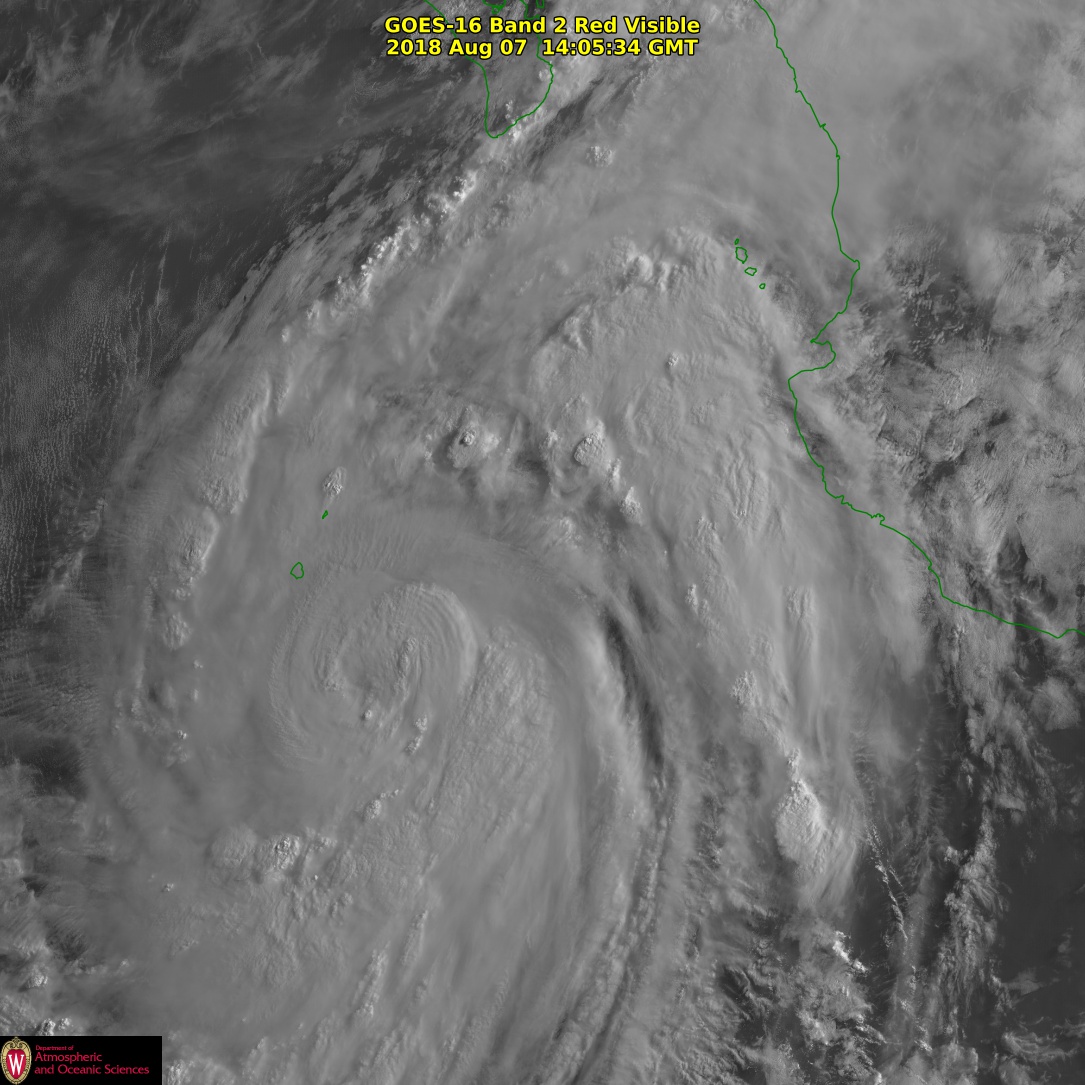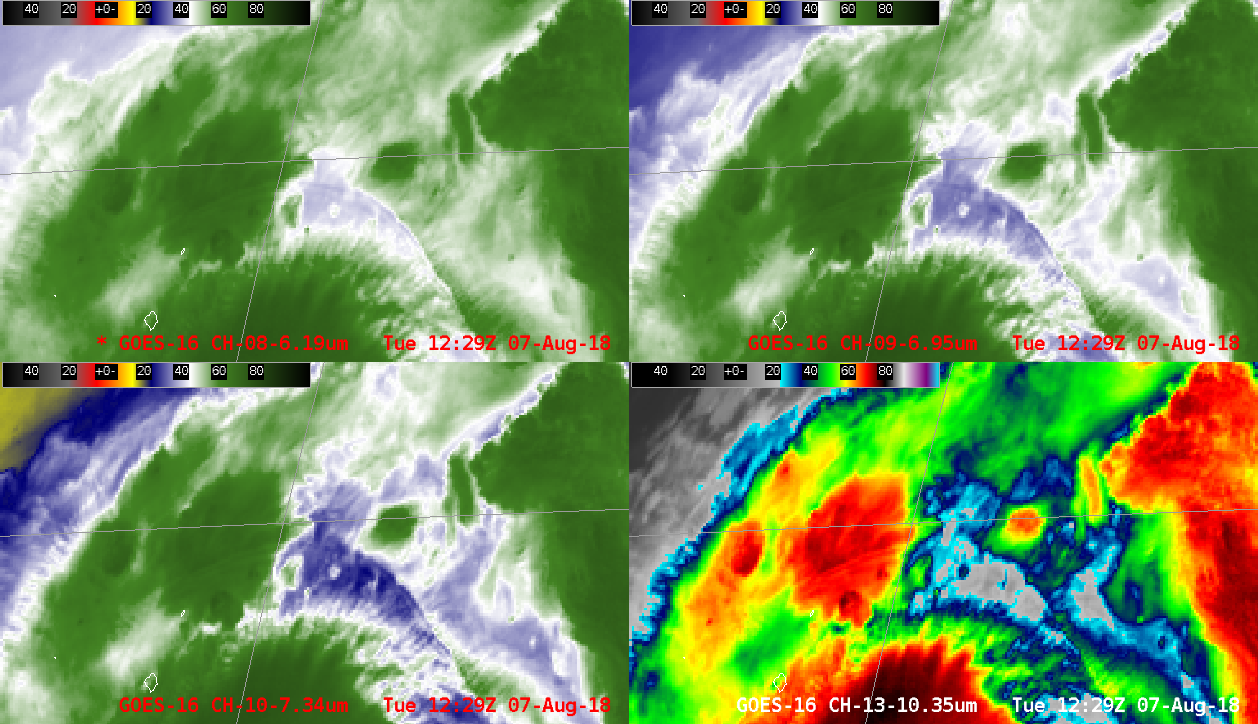Hurricane John

GOES-16 “Red” Visible (0.64 µm) images [click to play animation | MP4]
GOES-16 Upper-level Water Vapor (6.2 µm), Mid-level Water Vapor (6.9 µm), Low-level Water Vapor (7.3 µm) and “Clean” Infrared Window (10.3 µm) images (below) revealed an interesting gravity wave that was propagating northward away from the center of John. This wave appeared to perturb the cloud tops — perhaps via vertical mixing — leading to a slight warming of the colder cloud-top infrared brightness temperatures as the wave passed. The appearance and behavior of this wave was very similar to another observed in Nebraska, Colorado and Kansas on 22 July.

GOES-16 Upper-level Water Vapor (6.2 µm, top left), Mid-level Water Vapor (6.9 µm, top right), Low-level Water Vapor (7.3 µm, bottom left) and “Clean” Infrared Window (10.3 µm, bottom right) images [click to play MP4 animation]
===== 08 August Update =====
Visible images from GOES-15, GOES-14, GOES-17 and GOES-16 [click to play animation | MP4]
Note that the GOES-15 and GOES-14 Visible images do not appear as bright as those from GOES-17 and GOES-16 — prior to the GOES-R Series of satellites, the performance of visible detectors degraded over time, leading to imagery that appeared more dim as the Imager instrument aged. Visible detectors on the new ABI instrument benefit from on-orbit calibration to remedy this type of degradation.
* GOES-17 images shown here preliminary and non-operational *


![3-hourly analyses of 850 hPa relative vorticity [click to enlarge]](https://cimss.ssec.wisc.edu/satellite-blog/wp-content/uploads/sites/5/2018/08/180807_TS_Ileana_Hurricane_John_850hPa_vorticity_anim.gif)